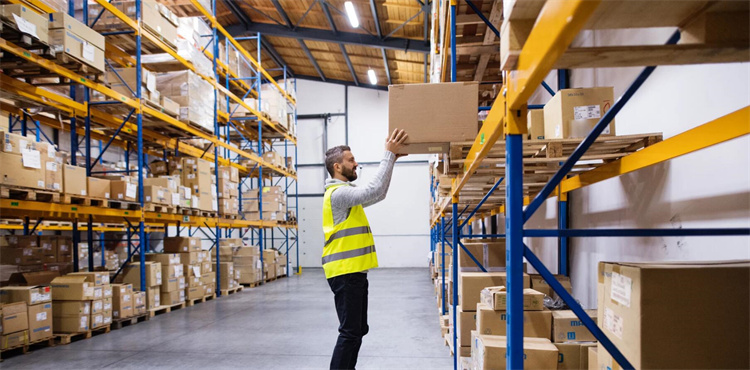Optimizing Reverse Logistics: How to Minimize Costs When Shipments Fail Quality Checks

Reverse logistics plays a vital role in supply chain management by handling the return of goods from customers back to the manufacturer or retailer. It’s not just about returns; it’s about turning challenges into opportunities. When shipments fail quality checks, businesses face increased costs from transportation, storage, and labor. These failures can also harm customer trust and brand reputation.
Optimizing reverse logistics offers several benefits. It enhances customer satisfaction by streamlining returns, reduces costs through efficient processes, and supports sustainability with recycling initiatives. Proactive strategies ensure businesses stay ahead, minimizing losses while improving overall efficiency.
Common Reasons for Shipment Failures and Their Cost Implications
Causes of Shipment Failures
Manufacturing defects and quality inconsistencies
Manufacturing defects often result from lapses in quality control during production. These defects can include faulty components, improper assembly, or substandard materials. When such issues occur, businesses face higher processing costs, additional waste, and increased transportation expenses. These problems not only inflate reverse logistics costs but also lead to customer dissatisfaction and lost sales opportunities. Efficient reverse logistics practices can help mitigate these challenges, ensuring smoother operations and happier customers.
Packaging and labeling errors
Packaging and labeling errors may seem minor, but they can cause significant disruptions. Incorrect labels can lead to delivery failure, while inadequate packaging might damage products during shipping. For ecommerce businesses, where returns are already common, such errors can increase the volume of returned goods. This adds to high shipping costs and complicates inventory management. Addressing these issues proactively can reduce unnecessary returns and improve customer satisfaction.
Incorrect product specifications or order mismatches
Order mismatches or incorrect product specifications create operational headaches. Customers expect to receive exactly what they ordered. When they don’t, they initiate returns, which disrupt operations and inflate costs. These mismatches also lead to inventory discrepancies and lost sales. Businesses must implement robust order verification processes to minimize these errors and maintain customer trust.
Financial and Operational Impacts
Increased transportation and handling costs
Reverse logistics involves significant transportation expenses. Before the pandemic, shippers paid around $10 per return, but rising shipping costs have increased this figure. Transportation alone can account for up to 60% of total reverse logistics costs, especially for high-value tech items. Hidden costs, such as labor and inventory expenses, further strain budgets.
Loss of customer trust and brand reputation
Mismanaged returns can harm a brand’s image. Customers expect seamless returns processes, and when businesses fail to deliver, dissatisfaction grows. On the flip side, efficient reverse logistics can enhance customer loyalty and improve public perception. Positive returns experiences can even boost a brand’s visibility in the competitive ecommerce landscape.
Challenges in inventory management and restocking
Handling returned goods introduces unique inventory challenges. Businesses must assess the condition, value, and repair status of each item, which complicates restocking. Forecasting returns accurately requires advanced analytics, while real-time visibility and automation streamline processing. Clear returns policies and standardized labeling also play a crucial role in reducing costs and improving efficiency.
Strategies to Minimize Costs in the Reverse Logistics Process

Implementing Stringent Quality Control Measures
Pre-shipment inspections to reduce defects
Pre-shipment inspections act as the first line of defense against defective products entering the supply chain. By thoroughly examining goods before they leave the warehouse, businesses can catch issues early. This reduces the likelihood of costly returns and ensures a smoother reverse logistics process. For example, inspecting electronics for functionality or verifying packaging integrity can prevent unnecessary shipping and handling returns at scale. These proactive measures not only save costs but also enhance customer satisfaction by delivering quality products.
Supplier quality audits for consistent standards
Regular supplier audits ensure that manufacturers adhere to agreed-upon quality standards. These audits help identify potential risks in production, such as inconsistent materials or assembly errors. By addressing these issues at the source, businesses can minimize defects and optimize reverse logistics. Consistent supplier performance also builds trust, reducing the need for frequent product return collection and improving overall efficiency.
Leveraging Technology to Optimize Reverse Logistics
Real-time tracking and monitoring systems
Technology plays a pivotal role in making reverse logistics more efficient. Real-time tracking systems, such as RFID and GPS, provide visibility into the location and status of returned items. This transparency helps businesses streamline the returns process and reduce manual work. Automating connections between shipping carriers, warehouses, and ecommerce platforms further enhances the efficiency of processing returns. These advancements ensure that businesses can handle returns at scale without disrupting operations.
Predictive analytics using platforms like JUSDA's JusLink
Predictive analytics transforms the reverse logistics process by offering actionable insights. Platforms like JUSDA's JusLink use advanced analytics to predict return patterns and optimize shipping routes. This technology highlights problematic areas, enabling quick adjustments to improve efficiency. It also automates notifications, freeing up employee time for higher-value tasks. By integrating predictive analytics, businesses can optimize reverse logistics and reduce costs while maintaining seamless return experiences.
Streamlining Returns Management Processes
Establishing centralized return centers
Centralized return centers simplify the handling of returned goods. These facilities focus on evaluating, sorting, and processing returns efficiently. For instance, centralized centers prevent supply chain disruptions by streamlining decisions on product handling. The benefits include faster processing times, reduced errors, and improved organization.
Function | Benefit |
|---|---|
Focused Evaluation | Efficient sorting and assessment of returns, reducing oversight. |
Streamlined Processes | Faster decisions on product handling, minimizing errors and delays. |
Boost in Efficiency | Prevents disruptions in the supply chain, maintaining organization. |
Clear and transparent return policies
Clear return policies are essential for effective reverse logistics. Customers appreciate knowing what to expect when returning a product. Transparent policies, accessible through websites or packaging inserts, reduce confusion and improve the returns process. For example, outlining timelines, fees, and eligibility conditions ensures a seamless return experience. Businesses that communicate these policies effectively can boost customer satisfaction and simplify returns management practices.
The Role of Data Analysis and Automation in Optimized Reverse Logistics
Data-Driven Decision Making for Returns Management
Identifying patterns in product returns
Data analysis plays a crucial role in understanding why products are returned. By examining return trends, businesses can identify recurring issues, such as defective components or improper handling during shipping. For example:
Are returns caused by a manufacturing defect or a design flaw?
Is the issue widespread or limited to specific batches?
Could external factors, like misuse or environmental conditions, be contributing?
Answering these questions helps businesses refine their processes and reduce future returns. Additionally, data visualization tools provide a clear picture of the reverse logistics process, from customer returns to inventory management. This clarity allows companies to pinpoint inefficiencies, such as delays in sorting or errors in shipping routes, and take corrective action.
Pinpointing root causes of quality failures
Advanced analytics can uncover the root causes of quality failures. For instance:
Inefficiencies in the sorting team may lead to mishandling of returned goods.
Poor coordination between suppliers and manufacturers might result in defective products.
Analyzing return shipping routes can reveal bottlenecks or damage-prone stages.
By integrating data from multiple sources, businesses can optimize their reverse logistics operations and reduce costs associated with quality failures.
Automation Tools for Reverse Logistics
Automated sorting and processing systems
Automation is transforming reverse logistics by streamlining labor-intensive tasks. Automated sorting systems quickly evaluate returned items, reducing manual errors and speeding up processing times. For example, robotics and AI can handle returns for warranty claims, ensuring accuracy and minimizing delays. These tools also help businesses recover value by processing returns for resale faster, improving inventory turnover.
In fact, 58% of businesses aim to boost efficiency through automation, while 42% focus on maximizing employee productivity. With real-time inventory tracking, companies can maintain accurate stock levels and avoid waste, further enhancing operational efficiency.
Integration of ERP systems with JUSDA's Supply Chain Management Collaboration Platform
Integrating ERP systems with platforms like JUSDA's Supply Chain Management Collaboration Platform offers several benefits:
Benefit | Description |
|---|---|
A single platform for both outbound and inbound logistics improves tracking, visibility, and coordination. | |
Better Customer Experience | Enhanced returns management process leads to faster refunds and replacements, improving customer loyalty. |
Data-Driven Improvements | Analyzing returns data helps identify product issues and improve inventory management. |
This integration ensures seamless communication across departments, enabling businesses to handle returns more efficiently. It also supports better decision-making by providing real-time insights into inventory and shipping processes. Companies that adopt such tools can reduce costs, improve customer satisfaction, and stay competitive in the fast-paced ecommerce landscape.
Sustainable Practices to Reduce Waste and Recover Value

Recycling and Refurbishing Returned Products
Establishing refurbishment programs for high-value items
Refurbishment programs offer a smart way to recover value from high-value items. These programs optimize the handling and processing of returned goods, reducing operational costs. For instance, refurbishing electronics or appliances can extend their lifespan and make them suitable for resale. This approach not only minimizes waste but also cuts down on transportation expenses, which often account for a significant portion of reverse logistics costs. Businesses that invest in refurbishment programs can streamline their processes, reduce labor costs, and recover lost value from returned products.
Partnering with recycling facilities to minimize waste
Recycling facilities play a crucial role in reducing waste generated by returns. By collaborating with these facilities, businesses can ensure that materials like plastics, metals, and glass are reused instead of ending up in landfills. This practice supports a sustainable future and helps companies meet their environmental goals. Additionally, recycling reduces the need for raw materials, conserving resources and lowering production costs. Retailers who adopt these practices not only contribute to a greener planet but also attract environmentally conscious consumers.
Tip: Recycling and refurbishing returned products can make a tangible environmental impact while supporting cost-saving initiatives.
Adopting Circular Economy Principles
Designing products for easier returns and repairs
Products designed for easy disassembly and repair simplify the reverse logistics process. Standardized return processes and proper product categorization allow businesses to make informed decisions about resale or refurbishment. For example, modular designs in electronics make repairs quicker and more cost-effective. These practices reduce labor costs, improve efficiency, and extend product lifecycles. By focusing on repairability, companies can minimize waste and recapture value from returned items.
Encouraging product take-back initiatives with JUSDA's logistics solutions
Product take-back initiatives align perfectly with circular economy principles. JUSDA’s logistics solutions make these programs more efficient by integrating centralized platforms and advanced technology. These solutions simplify the returns process, reduce confusion, and improve overall efficiency. For instance, JUSDA’s Supply Chain Management Collaboration Platform enables real-time tracking and data management, ensuring smooth coordination among stakeholders. Businesses that adopt such initiatives not only recover value but also strengthen their commitment to sustainability.
Note: Circular economy practices like repair, refurbishment, and take-back initiatives help reduce waste and conserve resources, making them essential for modern reverse logistics strategies.
Case Studies: Successful Cost Minimization in Reverse Logistics
Example 1: JUSDA's Use of Predictive Analytics to Reduce Returns
JUSDA has demonstrated how predictive analytics can transform reverse logistics. By leveraging its JusLink platform, the company identifies patterns in product returns and predicts potential issues before they escalate. For instance, the platform analyzes data from customer feedback and shipping records to pinpoint recurring defects or shipping delays. This proactive approach allows businesses to address problems early, reducing the volume of unnecessary returns.
Predictive analytics also optimizes shipping routes, ensuring faster and more cost-effective transportation of returned goods. By automating notifications and streamlining processes, JUSDA helps businesses save time and resources. This strategy not only minimizes costs but also enhances customer satisfaction by improving the overall returns experience.

JUSDA Solutions
To provide you with professional solutions and quotations.
Example 2: Centralized Return Centers for Electronics Manufacturers
Electronics manufacturers have significantly benefited from centralized return centers. These facilities dedicate resources to handling returns, ensuring efficient sorting and assessment. Processing returns in one location speeds up decisions on whether to restock, refurbish, or recycle products. This reduces delays and errors, making the process more streamlined.
Centralized centers also separate return activities from the main supply chain. This prevents disruptions and boosts overall logistics efficiency. For example, a manufacturer can focus on fulfilling new orders while the return center handles defective or unwanted items. This setup not only saves costs but also improves inventory management and operational flow.
Example 3: Sustainable Refurbishment Programs in the Automotive Industry
The automotive industry has embraced refurbishment programs to recover value from returned products. High-value items like car parts are inspected, repaired, and resold, extending their lifecycle. This approach reduces waste and lowers production costs. For example, refurbishing returned batteries or electronic components can save manufacturers significant resources compared to producing new ones.
Partnering with recycling facilities further enhances sustainability. Materials like metals and plastics are recovered and reused, minimizing environmental impact. These programs not only align with circular economy principles but also attract eco-conscious customers, creating a win-win scenario for businesses and the planet.
Proactively addressing shipment failures is essential for businesses aiming to streamline their operations and reduce costs. By implementing quality control measures, companies can minimize returns and maintain high product standards. Adopting technology, such as real-time tracking and predictive analytics, enhances efficiency and simplifies reverse logistics processes. Sustainable practices, like recycling and refurbishment, not only reduce waste but also create new revenue streams.
The long-term benefits of optimized reverse logistics are undeniable. Businesses can achieve cost savings through efficient inventory management and reduced handling expenses. Customers enjoy seamless returns experiences, which boost satisfaction and loyalty. These strategies ultimately lead to repeat business, positive word-of-mouth, and a stronger brand reputation.
Tip: Combining quality control, technology, and sustainability ensures a win-win for businesses and their customers.
See Also
Enhancing Supply Chain Strategies for Advanced Manufacturing Challenges
Effective Techniques for Successful Supply Chain Optimization
Understanding Cost Efficiency in Supply Chain Management
Mastering Lean Logistics for Success in High-Tech Production
Streamlining Supply Chains Through Effective Risk Management
